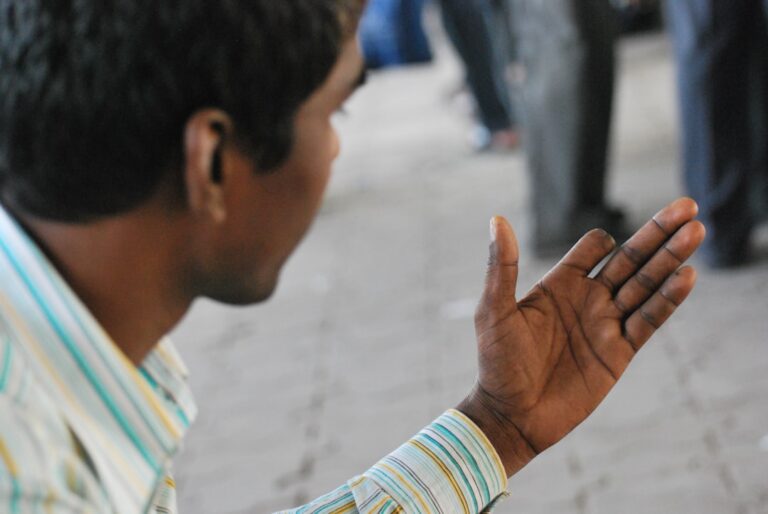Picasso Tiles is a brand of magnetic building blocks that have gained popularity among parents and educators for their ability to engage children in creative play and learning. These colorful tiles are made of high-quality ABS plastic and feature strong magnets on all sides, allowing them to easily connect and form various structures. The brand was founded in 2013 with the goal of providing children with a toy that promotes creativity, imagination, and STEM learning.
Key Takeaways
- Picasso Tiles are the ultimate building blocks for kids, offering endless possibilities for creative play.
- Using Picasso Tiles can benefit children’s STEM learning, helping them develop skills in science, technology, engineering, and math.
- Picasso Tiles can also help children develop fine motor skills, as they learn to manipulate the different shapes and sizes of the tiles.
- With a variety of shapes, sizes, colors, and patterns, Picasso Tiles offer a versatile toy for kids of all ages.
- When buying Picasso Tiles, consider your child’s age and interests, and choose a set that will challenge and inspire them.
Benefits of Using Picasso Tiles for Kids’ Playtime
One of the key benefits of using Picasso Tiles for kids’ playtime is that it encourages creativity and imagination. Children are able to build and create anything they can imagine, whether it’s a simple house or a complex structure. The open-ended nature of Picasso Tiles allows children to explore their own ideas and come up with unique designs.
In addition to fostering creativity, Picasso Tiles also enhance problem-solving skills. As children build and construct with the tiles, they are faced with challenges and obstacles that require them to think critically and find solutions. They learn how to plan, strategize, and overcome difficulties, which are important skills that can be applied in various aspects of life.
Furthermore, playing with Picasso Tiles promotes teamwork and social skills. Children can work together to build larger structures or collaborate on a specific design. They learn how to communicate effectively, share ideas, and compromise. This not only strengthens their social skills but also teaches them the value of cooperation and working together towards a common goal.
Why Picasso Tiles are the Best Building Blocks for STEM Learning
STEM stands for Science, Technology, Engineering, and Mathematics. It is an interdisciplinary approach to learning that integrates these four subjects in a hands-on and practical way. Picasso Tiles are an excellent tool for STEM learning as they provide children with the opportunity to explore these concepts in a fun and engaging manner.
Picasso Tiles promote STEM learning by allowing children to experiment with different structures and designs. They can build bridges, towers, and other architectural marvels, which helps them understand the principles of engineering and physics. They can also explore mathematical concepts such as symmetry, patterns, and spatial relationships.
Moreover, Picasso Tiles can be used for various STEM activities. For example, children can use the tiles to create a marble run and observe how gravity and momentum affect the movement of the marbles. They can also build simple circuits using LED lights and batteries to learn about electricity and conductivity. These hands-on activities not only make learning more enjoyable but also help children develop a deeper understanding of STEM concepts.
How Picasso Tiles Help Develop Fine Motor Skills in Children
Fine motor skills refer to the coordination of small muscles in the hands and fingers. These skills are essential for tasks such as writing, drawing, and buttoning clothes. Playing with Picasso Tiles can help children develop and improve their fine motor skills in several ways.
Firstly, manipulating the tiles requires precise hand-eye coordination. Children need to carefully align the magnets and connect the tiles together, which helps them develop their hand-eye coordination and dexterity.
Secondly, building with Picasso Tiles involves grasping and manipulating the tiles with the fingers. This helps strengthen the muscles in the hands and fingers, improving their fine motor skills.
Lastly, Picasso Tiles offer a variety of shapes and sizes that require different finger movements. Children need to use their pincer grasp to pick up smaller tiles or use their whole hand to hold larger ones. This allows them to practice different finger movements and develop a range of fine motor skills.
Understanding the Different Shapes and Sizes of Picasso Tiles
Picasso Tiles come in a variety of shapes and sizes, allowing children to create unique structures and designs. The most common shapes include squares, equilateral triangles, isosceles triangles, right triangles, and semi-circles. Each shape has its own unique properties and can be used in different ways.
Squares are the most basic shape and can be used as a foundation for building structures. They provide stability and can be easily connected to other shapes. Equilateral triangles have three equal sides and can be used to create stable structures with a triangular base. Isosceles triangles have two equal sides and can be used to create more complex shapes and designs.
Right triangles are useful for creating angles and corners in structures. They can be combined with squares or other triangles to form various shapes. Semi-circles are half of a circle and can be used to create arches or curved structures.
By understanding the properties of each shape, children can use them strategically to build stable and creative structures.
Tips for Building Creative Structures with Picasso Tiles

Building with Picasso Tiles is not only about stacking blocks on top of each other. There are various techniques that children can use to create more complex and creative structures.
Basic building techniques include stacking, nesting, and interlocking the tiles. Stacking involves placing one tile on top of another to create height. Nesting involves fitting smaller tiles inside larger ones to create a layered effect. Interlocking involves connecting the tiles at different angles to create stability.
Advanced building techniques include creating angles, curves, and arches. Angles can be created by combining squares and right triangles. Curves can be created by using semi-circles or by connecting multiple tiles at different angles. Arches can be created by connecting multiple triangles or semi-circles in a curved shape.
By experimenting with these techniques, children can build unique and imaginative structures that go beyond the traditional block tower.
Picasso Tiles: A Safe and Durable Building Block for Kids
Safety is always a concern when it comes to children’s toys, and Picasso Tiles have taken measures to ensure their products are safe for children to use. The tiles are made of non-toxic ABS plastic, which is free from harmful chemicals such as BPA and phthalates. They have also undergone rigorous testing to meet safety standards.
In terms of durability, Picasso Tiles are built to withstand rough play and frequent use. The magnets are securely embedded in the tiles, preventing them from coming loose or falling out. The plastic is also strong and resistant to breakage, ensuring that the tiles can withstand the wear and tear of everyday play.
When compared to other building blocks on the market, Picasso Tiles stand out for their safety features and durability. They provide parents with peace of mind knowing that their children are playing with a safe and long-lasting toy.
Exploring the Different Colors and Patterns of Picasso Tiles
Picasso Tiles come in a wide range of colors and patterns, adding an extra element of creativity to children’s playtime. The colors and patterns can be used to create unique structures and designs, allowing children to express their artistic side.
The different colors can be used strategically to create patterns or highlight specific parts of a structure. For example, children can use contrasting colors to create a checkerboard pattern or use different shades of the same color to create a gradient effect.
Patterns can also be created by arranging the tiles in a specific order or sequence. Children can experiment with different patterns such as stripes, zigzags, or polka dots. This not only adds visual interest but also helps children develop their pattern recognition skills.
By incorporating colors and patterns into their creations, children can take their building experience to the next level and create truly unique structures.
Picasso Tiles: A Versatile Toy for Kids of All Ages
One of the great things about Picasso Tiles is that they are suitable for a wide range of ages. Younger children can start by simply stacking and connecting the tiles together, while older children can explore more complex designs and structures.
For younger children, Picasso Tiles can be used as a sensory toy. They can explore the different shapes, colors, and textures of the tiles, helping them develop their sensory perception and fine motor skills.
For older children, Picasso Tiles can be used for more advanced building projects. They can follow instructions to build specific structures or use their imagination to create their own designs. The versatility of Picasso Tiles allows children to continue using them as they grow and develop new skills.
Where to Buy Picasso Tiles and How to Choose the Right Set for Your Child
Picasso Tiles can be purchased from various retailers both online and in physical stores. They are available in different sets, ranging from small starter sets to large sets with hundreds of tiles. When choosing a set, there are several factors to consider.
Firstly, consider the age and skill level of your child. Younger children may benefit from a smaller set with basic shapes, while older children may enjoy a larger set with more advanced shapes and colors.
Secondly, consider your child’s interests and preferences. If your child is interested in a specific theme such as animals or vehicles, there are sets available that incorporate these themes into the designs.
Lastly, consider your budget. Picasso Tiles come in a range of prices, so it’s important to choose a set that fits within your budget while still providing enough tiles for creative play.
In conclusion, Picasso Tiles are the ultimate building blocks for children’s playtime and learning. They encourage creativity, enhance problem-solving skills, promote teamwork, and provide a fun and engaging learning experience. They are also an excellent tool for STEM learning, helping children explore science, technology, engineering, and mathematics in a hands-on way. Furthermore, Picasso Tiles help develop fine motor skills in children and come in a variety of shapes, sizes, colors, and patterns that allow for endless possibilities. They are safe and durable, making them a reliable choice for parents. Whether you’re looking for a toy that sparks your child’s imagination or a tool for educational play, Picasso Tiles are a versatile and worthwhile investment.
If you’re a fan of Picasso Tiles and looking for some inspiration on how to make the most out of these magnetic building blocks, you should definitely check out Tom’s Rant’s article on “Hello World.” In this insightful piece (link: https://www.tomsrant.com/hello-world/), Tom explores the endless possibilities and creative potential that Picasso Tiles offer. From building towering structures to creating intricate designs, this article will surely ignite your imagination and take your Picasso Tiles experience to a whole new level.
FAQs
What are Picasso Tiles?
Picasso Tiles are magnetic building tiles that come in various shapes and sizes. They are designed to encourage creativity and imagination in children and adults alike.
What are the benefits of playing with Picasso Tiles?
Playing with Picasso Tiles can help develop fine motor skills, hand-eye coordination, spatial awareness, and problem-solving abilities. It can also foster creativity, imagination, and teamwork.
What age group is suitable for Picasso Tiles?
Picasso Tiles are suitable for children aged 3 years and above. However, they can also be enjoyed by adults of all ages.
Are Picasso Tiles safe for children?
Yes, Picasso Tiles are safe for children. They are made from non-toxic, BPA-free materials and have rounded edges to prevent injuries.
How many pieces come in a set of Picasso Tiles?
The number of pieces in a set of Picasso Tiles varies depending on the set. Some sets may have as few as 16 pieces, while others may have as many as 200 pieces.
Can Picasso Tiles be used to build 3D structures?
Yes, Picasso Tiles can be used to build 3D structures. The magnetic tiles can be stacked and connected in various ways to create complex structures and designs.
Can Picasso Tiles be combined with other magnetic building sets?
Yes, Picasso Tiles can be combined with other magnetic building sets as long as they are compatible. However, it is recommended to stick to the same brand to ensure compatibility.













+ There are no comments
Add yours